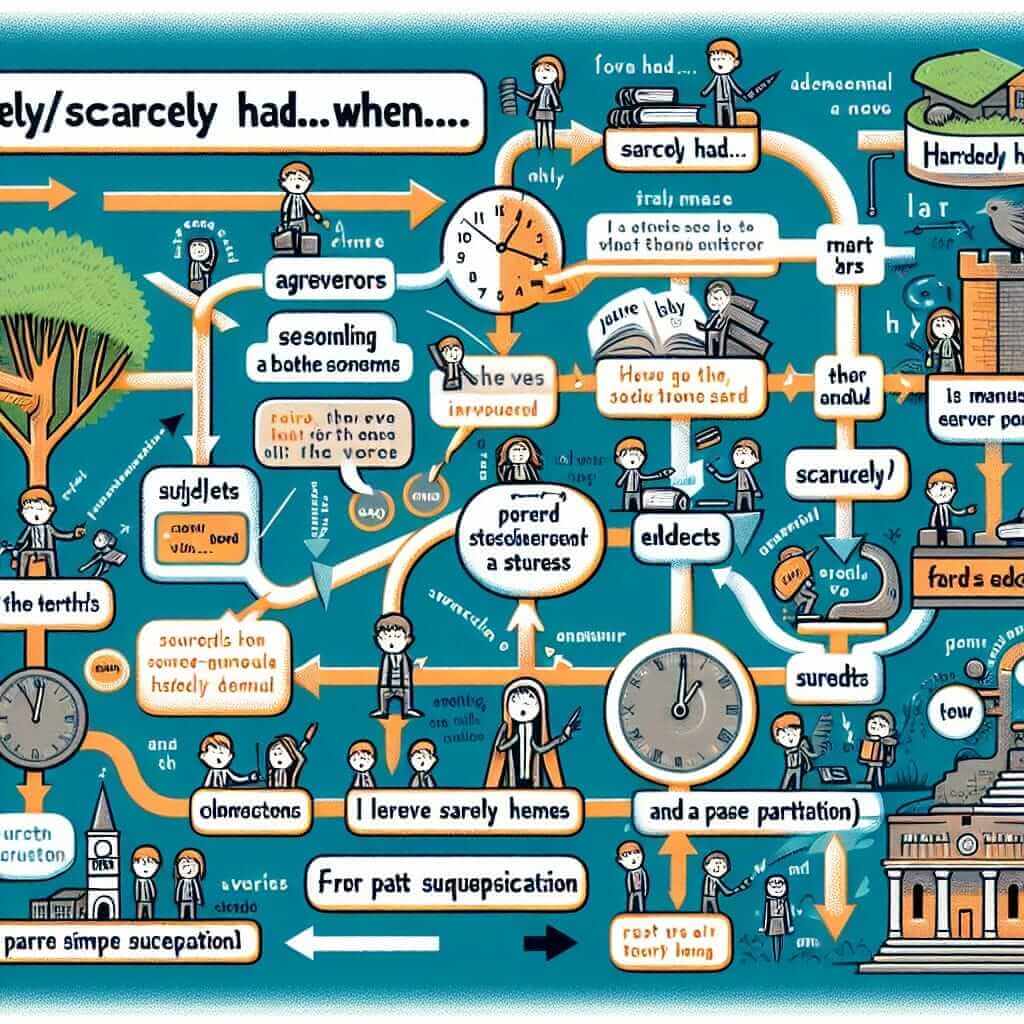In the realm of the IELTS exam, demonstrating a strong command of grammar is crucial for achieving a high band score. One grammatical structure that can significantly enhance your writing and speaking is inversion. While it might appear complex at first glance, understanding its nuances can greatly elevate the sophistication and fluency of your language. This article delves into the intricacies of a specific inversion structure, “hardly/scarcely had… when…”, exemplified by the sentence “Hardly had he left when we missed him.” We’ll analyze its construction, usage, and how it can be strategically employed to boost your IELTS performance.
Let’s consider a few examples of how this inversion structure might appear across different sections of the IELTS exam:
Speaking (Part 2): Describe a time you realized you missed someone.
“I had a close friend in university who moved abroad. Hardly had she settled in when I started to feel the weight of her absence. I missed our daily chats and shared laughter…”
Writing (Task 1): The graph shows the number of tourists visiting a coastal town before and after the construction of a new resort.
“The construction of the resort had an immediate impact on tourism. Hardly had the resort opened its doors when the number of visitors skyrocketed…”
Writing (Task 2): Some people argue that technology connects us, while others believe it isolates us. Discuss both views and give your own opinion.
“While technology offers a plethora of ways to stay connected, its ability to foster isolation cannot be ignored. Hardly had social media platforms gained popularity when concerns arose regarding their potential to create echo chambers and decrease face-to-face interaction.”
In each of these examples, the inversion structure adds a touch of dramatic flair and emphasizes the rapid succession of events. Let’s break down this powerful grammatical tool further.
Understanding “Hardly/Scarcely Had…When…”
This inversion structure is used to describe a situation where one event happens immediately after another, often with a surprising or unexpected element. The structure conveys a sense of swiftness and immediacy.
Structure and Grammar
The structure follows this pattern:
Hardly/Scarcely + had + Subject + Past Participle + when + Subject + Past Simple
Example:
- Hardly had he finished speaking when the audience erupted in applause.

Let’s break it down:
- Hardly/Scarcely: These adverbs indicate that something had barely happened.
- Had: This is the auxiliary verb used in the past perfect tense.
- Subject: The person or thing performing the action (e.g., he, she, the train, the company)
- Past Participle: The past participle of the main verb (e.g., finished, arrived, left).
- When: This conjunction connects the two clauses and indicates the immediate sequence of events.
- Past Simple: The tense used in the second clause to describe the action that followed immediately (e.g., erupted, started, realized).
Usage in IELTS
This structure can be effectively used in both the Writing and Speaking sections of the IELTS exam to:
1. IELTS Writing
- Describe trends in Task 1 (Academic): Especially useful when illustrating rapid changes in data, like the examples with the tourist numbers and social media’s impact.
- Present arguments effectively in Task 2: Using this structure can make your arguments more impactful and demonstrate a good command of complex grammar.
Example:
- “Hardly had the government launched the new policy when the opposition began voicing their concerns.”
2. IELTS Speaking
- Create engaging narratives: When recounting a personal experience, this structure can make your story more vivid and captivating, as seen in the example about the friend moving abroad.
- Express ideas with impact: Using this structure correctly showcases a higher level of fluency and grammatical accuracy, contributing to a better score in the fluency and grammatical accuracy criteria.
Example:
- “Scarcely had I stepped off the plane when I was enveloped by the vibrant energy of the city.”
Achieving a Higher Band Score
To achieve a higher band score using this inversion structure, consider the following:
- Accuracy: Ensure the structure is grammatically sound, paying close attention to the verb tenses and word order.
- Variety: While effective, avoid overusing it. Use a mix of grammatical structures to demonstrate your range.
- Context: Use it appropriately in contexts where it logically makes sense to emphasize the immediate sequence of events.
Common Errors and How to Avoid Them
Here are common mistakes students make when using this structure:
- Incorrect tense: Using the present perfect instead of the past perfect.
- Incorrect: Hardly has he finished when…
- Correct: Hardly had he finished when…
- Misplaced adverb: Putting “hardly” or “scarcely” in the wrong position.
- Incorrect: He had hardly finished when…
- Correct: Hardly had he finished when…
- Overuse: Using the structure too often, making your writing or speaking sound unnatural.
Conclusion
Mastering inversions, particularly the “hardly/scarcely had…when…” structure, is a valuable asset for any IELTS candidate. By understanding its form, usage, and potential pitfalls, you can confidently incorporate it into your writing and speaking, adding sophistication and clarity to your communication. Remember to practice implementing this structure in various contexts to strengthen your grasp and naturalize its use.